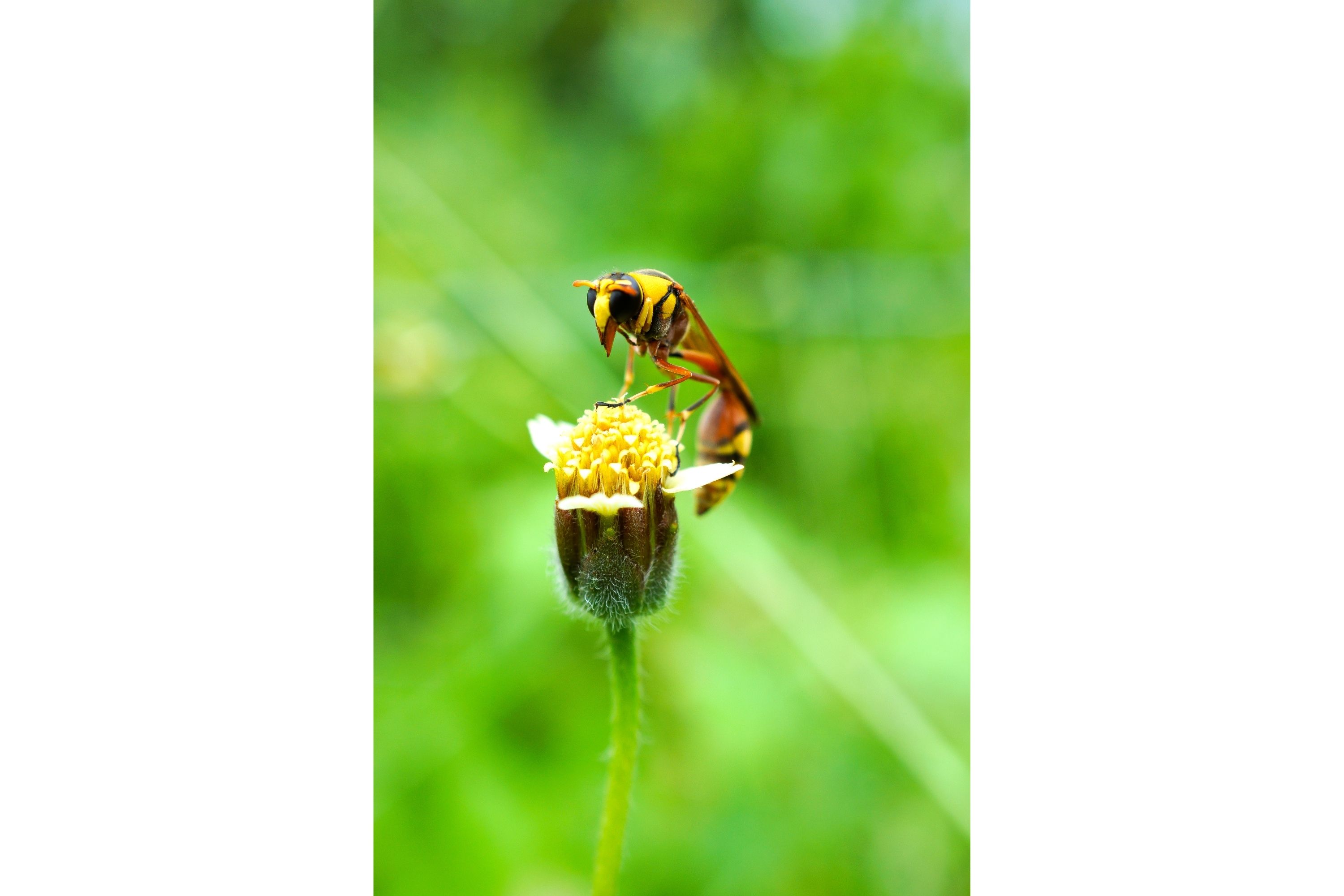Black-and-yellow mud dauber
(Sceliphron caementarium)

Description
Sceliphron caementarium, also known as the yellow-legged mud-dauber wasp, black-and-yellow mud dauber (within the US), or black-waisted mud-dauber (outside of the US), is a species of sphecid wasp. There are some 30 other species of Sceliphron that occur throughout the world, though in appearance and habits they are quite similar to S. caementarium. The Latin species name caementarius means mason or builder of walls. S. caementarium is widespread in Canada, the United States, Central America, South Africa and the West Indies, and has been introduced to many Pacific Islands (including Australia, Hawaii, and Japan), Peru and Europe, where it has become established in some countries of the Mediterranean Basin (Croatia, France and Corsica, Italy, Cyprus, Malta, the Canary Islands, and Madeira) and Austria, and Ukraine. This species is found in a wide variety of habitats, such as rock ledges, man-made structures, puddles and other water edges, cypress domes, in long leaf pines (Pinus palustris), and in turkey oaks. Sceliphron caementarium can reach a length of 24–28 mm (15⁄16–1+3⁄32 in). Their petiole is generally black and is about half the length of the entire abdomen, however the population in the desert southwest often has a yellow petiole. The thorax shows various yellow markings, while the abdomen is normally black, with yellow propodeum (typical of females). The eyes are black, the antennae are black, and the legs are yellow with black trochanters and femurs. Within the United States, it is the only species with yellow-marked legs. The wings are a tawny color. The black and yellow mud daubers are solitary parasitoid wasps that build nests out of mud. These sphecid wasps collect mud balls at puddle and pool edges for constructing nests. Frequently, nests are built in shaded areas inside formations that are sheltered from the weather or from other environmental elements. These sites may be naturally-occurring, or man-made structures. Some examples are: under and inside various types of bridges, barns, garages, open-air porches, or under housing eaves. The nests comprise up to 25 vertically arranged, individual cylindrical cells. After initial creation and covering of the clutch, this sphecid wasp uses more mud as a means covering and protecting the whole cluster of cells, thereby forming a smooth appearance, and a uniform nest. The entire nest may attain an area equal to, or larger than, the size of an average human fist.
Taxonomic tree:







